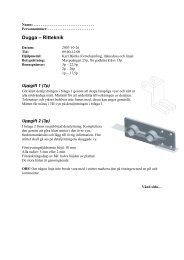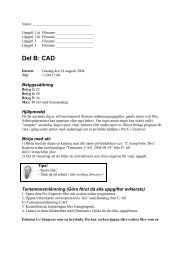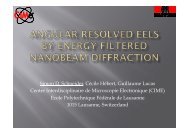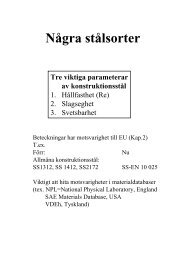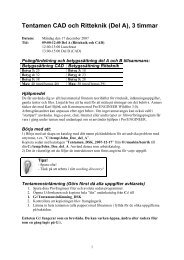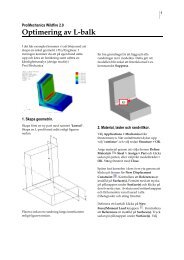Printed Electronics World - Thin film salt and paper battery
Printed Electronics World - Thin film salt and paper battery
Printed Electronics World - Thin film salt and paper battery
You also want an ePaper? Increase the reach of your titles
YUMPU automatically turns print PDFs into web optimized ePapers that Google loves.
www.printedelectronicsworld.com<strong>Printed</strong> <strong>Electronics</strong> <strong>World</strong> Articles<strong>Thin</strong>-film <strong>salt</strong> <strong>and</strong> <strong>paper</strong> <strong>battery</strong>18 Sep 2009A new thin-film <strong>paper</strong> <strong>battery</strong> that holds great promise for applications in areas whereconventional Li-ion batteries are not the perfect choice has been developed at UppsalaUniversity, Sweden.The aqueous-based <strong>battery</strong> is much easier <strong>and</strong> cost-efficient <strong>and</strong> can be integrated into cheaplarge-scale devices, flexible energy storage devices, textiles or packaging. Furthermore, it hasan environmentally friendly design.The research group led by Prof. Maria Stromme made this flexible <strong>battery</strong> using cellulose <strong>and</strong><strong>salt</strong>, two common <strong>and</strong> inexpensive ingredients that keep manufacturing costs low. The novelcellulose composite material cellulose fibers individually coated with thin layers of theconductive polymer polypyrrol is mechanically robust, lightweight, flexible, <strong>and</strong> can bemolded into various shapes. <strong>Thin</strong> composite sheets rolled in on themselves can be used tomake very compact energy storage devices. Additionally, <strong>and</strong> particularly attractive, thematerial is fully recyclable.To form the rechargeable flexible <strong>battery</strong>, thin pieces of the cellulose composite ananostructured high-surface area material were used as electrodes, which were separated by afilter <strong>paper</strong> soaked in a <strong>salt</strong> solution made of sodium chloride that acts as electrolyte. Twoplatinum foils were used as current collectors. Total thickness of this cell was measured ~2mm.. To avoid evaporation of water from the electrolyte additional encapsulation in needed.
Fig 1. The cellulose-polypyrrol conductive <strong>paper</strong> composite (a) SEM micrograph taken with amagnification factor of 10 000, (b) TEM image of the cellulose composite fiber, (c) schematicimage, <strong>and</strong> (d) photograph of the composite <strong>paper</strong> <strong>battery</strong> cell before <strong>and</strong> after sealing it intoa polymer coated aluminum pouch.Stromme says, "You don't need advanced equipment to make the batteries, so they could bemade on site in developing countries." Still, there is further development needed until the <strong>salt</strong><strong>and</strong> <strong>paper</strong> <strong>battery</strong> becomes interesting for commercial use.In comparison with Lithium batteries, that can deliver 4 volts <strong>and</strong> show energy densities of200 to 300 milliwatt-hours per gram, a single <strong>paper</strong> cell delivers 1 volt <strong>and</strong> stores up to 25milliwatt-hours energy per gram.However, the team is already working on optimizing the <strong>battery</strong>'s characteristics, <strong>and</strong> thinkingabout stacking of multiple cells <strong>and</strong> in-series connection to increase the voltage. Stromme isconfident that the <strong>battery</strong> could already be produced commercially within three years.<strong>Thin</strong>-film batteries have a long shelf life, retaining their charge after being stored for manyyears, <strong>and</strong> they can be charged <strong>and</strong> discharged tens of thous<strong>and</strong>s of times, says Raghu Das,CEO of IDTechEx <strong>and</strong> expert on printed electronics, "enabling wireless sensors that can lastfor decades with an appropriate energy harvester attached."The novel <strong>paper</strong>-<strong>salt</strong>-<strong>battery</strong> has high potential to be an ideal replacement for lithium thin-filmbatteries, which usually have solid electrolytes <strong>and</strong> need longer recharging cycles, especiallyin low-power portable devices.For more attend <strong>Printed</strong> <strong>Electronics</strong> Asia 2009 or <strong>Printed</strong> <strong>Electronics</strong> USA 2009 .Article by Ms Cathleen Thiele
Telephone: 49 371 36 777 645Email: c.thiele@IDTechEx.com



